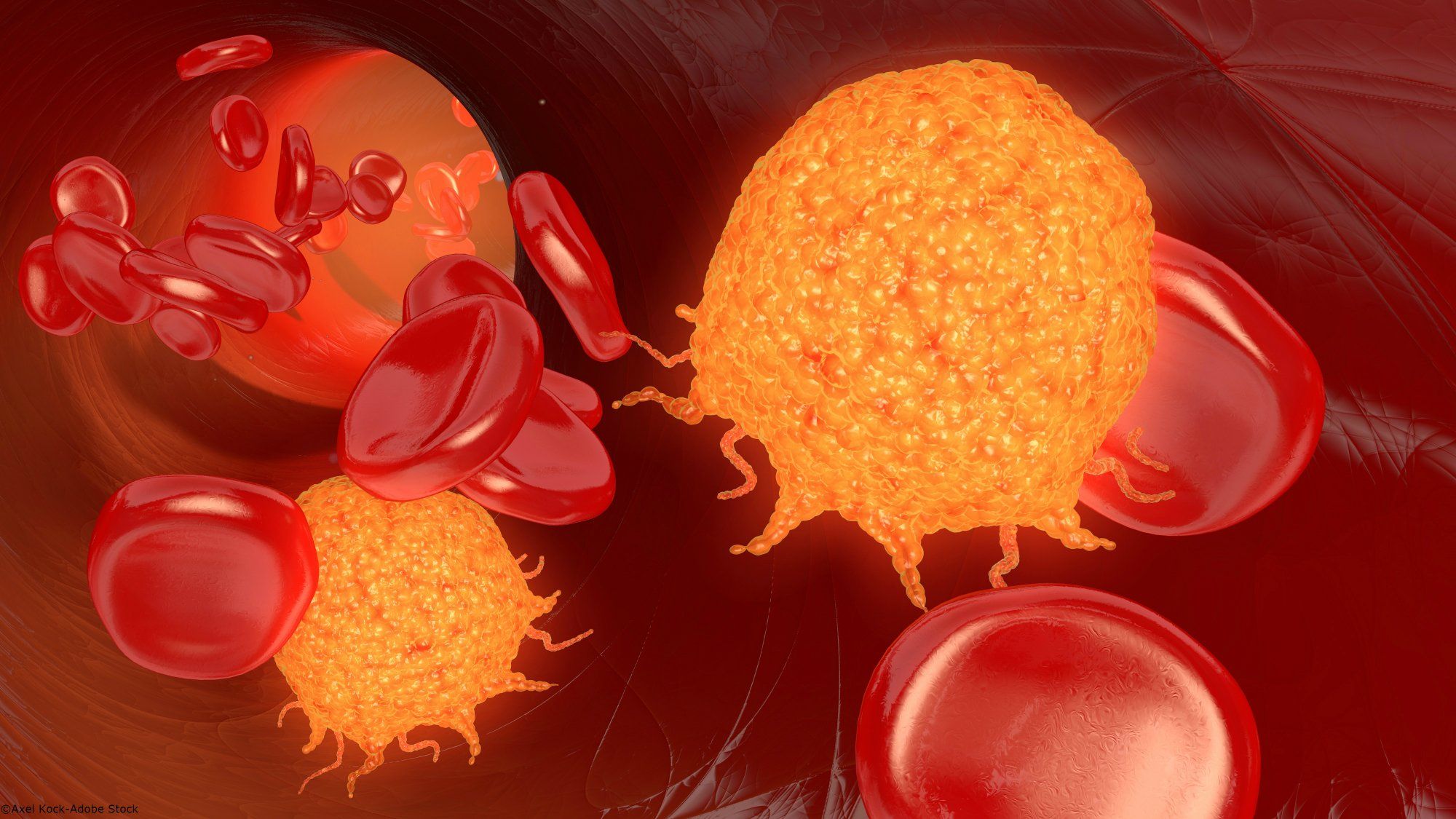INB-100 After HSCT Shows Enduring Efficacy in Complex Leukemias
Early INB-100 results showed the potential to achieve durable remissions and improve survival in patients with complex leukemias, particularly AML.
Early INB-100 results showed the potential to achieve durable remissions and improve survival in patients with complex leukemias, particularly AML.

INB-100, an allogenic gamma-delta T-cell therapy, administered after hematopoietic stem cell transplantation (HSCT) elicited long-term efficacy in an investigator-sponsored phase 1 trial (NCT03533816) in the treatment of patients with complex leukemias, including acute myeloid leukemia (AML), according to a press release from the developer, IN8bio.1
The treatment demonstrated the potential to improve survival and achieve durable long-term remissions. Results were shared in an investor presentation.2 Full results are going to be presented at the 2025 Tandem Meetings.
In all patients, INB-100 yielded a progression-free survival (PFS) rate of 90.9% and an overall survival (OS) rate of 100% at 1 year. In patients with AML, PFS and OS were both 100% at 1 year with INB-100 vs rates of 67.8% and 74.7% for historical AML control cohorts, respectively, at the Center for International Blood and Marrow Transplant Research (CIBMTR) and 57.4% and 66.7%, respectively, at the Kansas University Cancer Center.
“These data suggest that the addition of allogeneic INB-100 gamma-delta T cells appears to have the potential to support durable relapse-free remissions in [patients with] high-risk leukemia, with 100% of treated [patients with] AML remaining in remission after a median follow-up of almost 2 years post-transplant,” Joseph P. McGuirk, DO, Schutte-Speas professor of Hematology-Oncology, division director, and medical director of Hematologic Malignancies and Cellular Therapeutics, Blood and Marrow Transplant, at The University of Kansas Cancer Center, stated in the release.1 “These results are truly exciting. We are seeing something we rarely encounter in [patients with] high-risk leukemia: sustained, durable remissions with minimal [adverse] effects to date. These continued results of INB-100, with the manageable toxicity profile, suggest it could become an attractive cellular therapy with the potential to extend survival in this difficult-to-treat patient population.”
All patients with AML (n = 9) achieved a median duration of remission of 20.1 months. Patients with AML who were in the original cohort have reached a median complete remission of 23.3 months.
A total of 23 patients were enrolled in the trial, and 16 were fully dosed and evaluable for safety data; 1 patient was waiting to be dosed as of January 17, 2025.2 The median age of patients was 68 years, the majority had AML, and patients received up to 7 prior therapies.
Treatment consisted of a reduced intensity conditioning regimen of fludarabine, cyclophosphamide, and total body irradiation, then haploidentical HSCT with neutrophil engraftment 15 to 20 days following HSCT, then INB-100 infusion within 7 days of engraftment. INB-100 was given at single doses of 1 x 106 cells/kg, 3 x 106 cells/kg, or 1 x 107 cells/kg.
Eligible patients were adults with an identified haploidentical donor; a Karnofsky performance status of 70 or greater; and AML in molecular CR (mCR) with intermediate/high-risk features or relapsed disease, chronic myeloid leukemia in any chronic phase, myelodysplastic syndrome with intermediate/high-risk features, or acute lymphoblastic leukemia in mCR with high-risk features or relapsed disease.
The trial’s primary end points were safety, dose-limiting toxicity, and recommended phase 2 dose of DeltEx™ gamma-delta T cell infusion. Secondary end points were incidence of acute and chronic graft-versus-host disease, relapse, and OS.
Regarding safety, the most common treatment-emergent adverse events (TEAEs) of any grade were anemia (88.2%), platelet count decreases (82.4%), hypomagnesemia (70.6%), white blood cell decreases (58.8%), absolute neutrophil count decreases (58.8%), and creatinine increases (52.9%). Of grade 4 toxicities, the most common TEAEs were platelet count decreases (52.9%), absolute neutrophil count decreases (35.3%), white blood cell decreases (23.5%), and absolute lymphocyte count decreases (11.8%). Potential treatment-related serious AEs were grade 2/3 maculopapular rash, grade 3 nausea, and grade 3 anemia.
At a data-cutoff of January 17, 2025, there were no treatment-related dose-limiting toxicities, no suspected unexpected serious adverse reactions, and no treatment-related deaths.
References
- IN8bio reports updated positive results from phase 1 trial of INB-100 in leukemia patients. News release. IN8bio, Inc. February 11, 2025. Accessed February 12, 2025. https://tinyurl.com/yeyr3prt
- Harnessing the Power of Gamma-Delta T Cells. IN8bio. February 11, 2025. https://tinyurl.com/mw62by6z
Newsletter
Stay up to date on recent advances in the multidisciplinary approach to cancer.